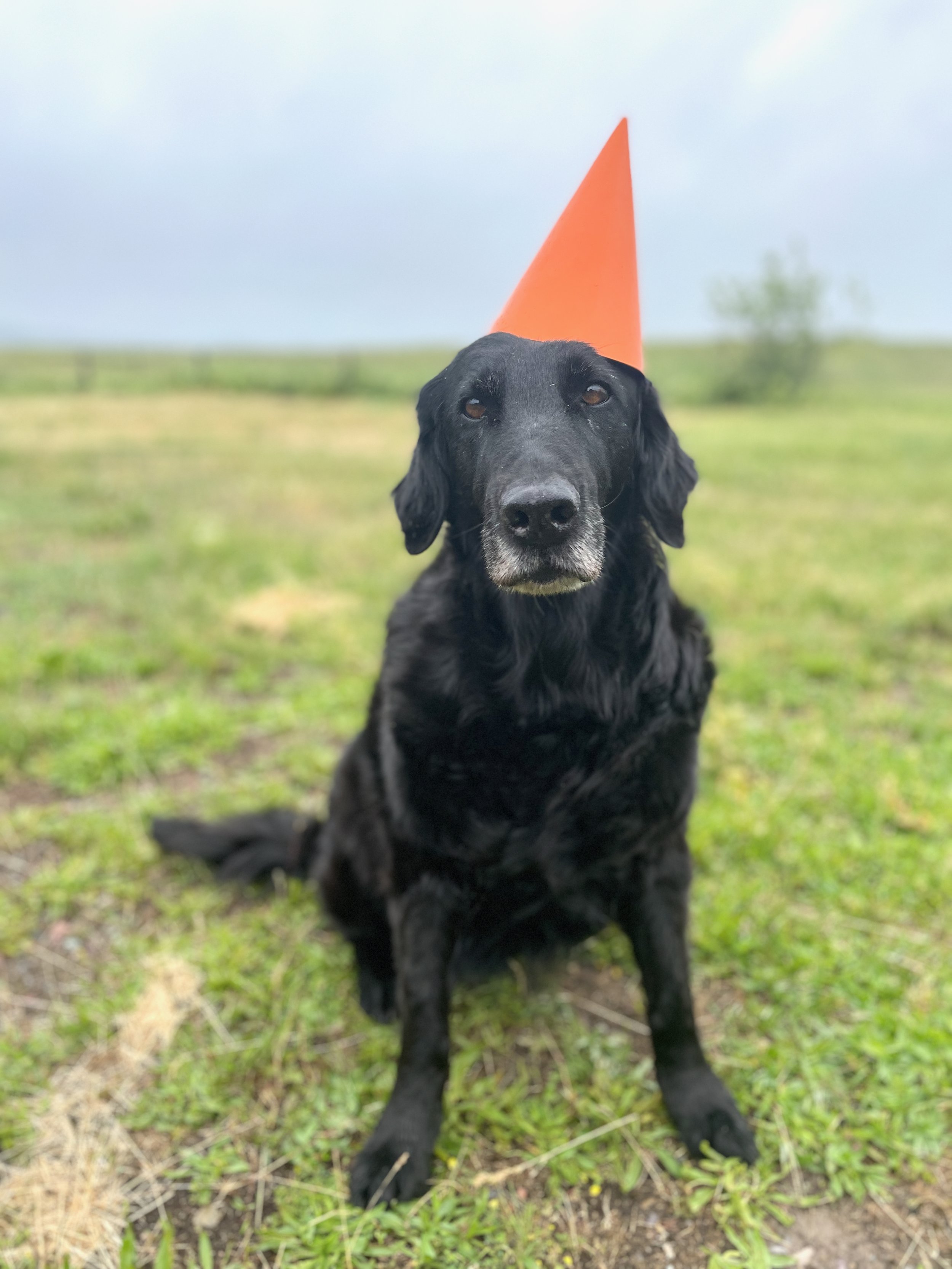Flat-coat genetic rescue, step-by-step
Genetic rescue is a conservation breeding strategy whereby new genes are introduced into a fixed population in order to reduce inbreeding rates and improve health and fitness. Purebred dogs can accomplish this by borrowing from their own tradition and origins — outcrossing, then selecting for the desired traits to carry forward into future generations. While this breeding strategy may now be at odds with the unsustainable constraints of closed registries, breed conservation demands we break from such superficial barriers. For the love of Flat-coats, read on.
Step 1: Establish and prioritize breeding criteria
-
Use Embark or another high resolution, SNP genetic profiler to ascertain predicted litter COI and check for known mutations. Aim for a litter COI under 5%. If either prospective parent dog presents a particular risk for mutations not included in the Embark panel, test for those as well. Be mindful of dogs who are carriers of Mendelian diseases — you certainly need not exclude those dogs, but future litters may demand continued testing.
-
Select a breed or cross-breed dog with a low incidence of health problems, paying particular attention to cancer rates and cardiac health, but remember that outcrossing mitigates disease risk. Get to know the candidate dog and pedigree to ensure it promises to provide soundness of body and mind.
-
Consider an outcross prospects phenotypical similar while remembering that “return to type” isn’t difficult to achieve. Consider, especially, the more amorphous behavioral traits that are difficult to reliably perpetuate. Outcrossing also presents an opportunity to enhance Flatcoat traits you love and re-instill traits you fear to be diminishing, so take the opportunity to incorporate your own preferences and think to future generations. There are so many right answers.
Step 2: Outcross
Breed outcross litters.
Profile the puppies with Embark, or a similarly high resolution, SNP profiler.
Select the puppies you want to carry forward, being mindful of genetic advantage and phenotype. Ensure those puppies are maintained intact and available for future breeding.
Place puppies in homes that will participate in long-term monitoring (brief annual updates and notification upon death of dog).
Step 3: Backcross
Breed the multi-generation outcrosses to Flatcoats, being mindful to maintain low expected COIs and genetic variability across the population.
Again, select those pups you wish to carry forward, being mindful of genetic profiles and type. You will start to see the “return to type” that homozygosity promises, but may not have the refinement or consistency desired until future generations.
Anyone wishing to skip the first two steps can jump in here by breeding to outcrossed or backcrossed dogs.
Step 4: Monitor. Rinse and repeat.
Monitor COI and health outcomes over time and reincorporate fresh genetic material as needed, either by utilizing other outcrossed or backcrossed dogs for breeding, or by returning to Step 1. We know from simulations that the genetic diversity gained from a single outcross will be halved with each backcross generation, so continued outcrossing is necessary to maintain gene pool health.
While the Flatcoat Conservation Project is currently a "proof of concept” genetic rescue program, breed conservation requires involvement from the broader community. We invite all Flatcoat breeders, Flatcoat lovers, and outcross enthusiasts to collaborate. It’s also important to note that while the Flatcoat’s breed profile positions them as especially viable candidates for genetic rescue, unsustainable inbreeding exists in many breeds with closed stud books — we’re keen to share our experiences with, and learn from, other breed conservation efforts.





